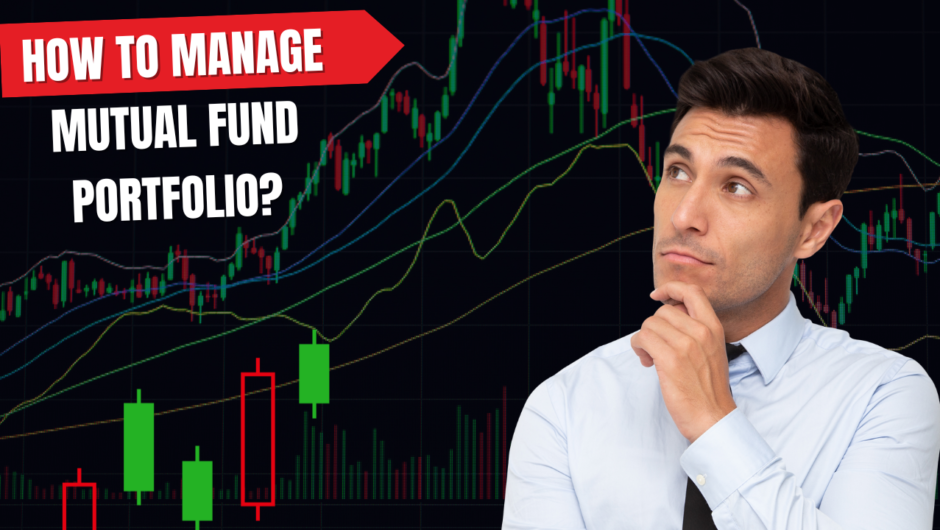Investment Approach:
Actively Managed Funds:
In actively managed funds, the investment approach involves a team of professional portfolio managers and research analysts making active decisions to buy and sell securities within the fund’s portfolio. The goal is to outperform the market or a specific benchmark index through active stock selection and market timing. The fund manager uses their expertise, research, and analysis to identify mispriced securities or potential investment opportunities.

Key features of actively managed funds:
- Frequent buying and selling of securities based on the fund manager’s research and market analysis.
- Flexibility to adjust the portfolio’s asset allocation and investment strategy in response to changing market conditions and economic outlook.
- Actively managed funds may follow different investment styles, such as growth, value, or blend, depending on the manager’s investment philosophy.
Passively Managed Funds:
Passively managed funds, on the other hand, aim to replicate the performance of a specific benchmark index, such as the S&P 500 or the NSE Nifty 50. The fund manager’s role is to construct a portfolio that closely mirrors the composition of the chosen index. Rather than actively selecting individual securities, the fund manager aims to hold the same securities in the same proportion as the index.
Key features of passively managed funds:
- The fund manager’s primary goal is to match the returns of the chosen benchmark index, not to outperform it.
- Minimal active decision-making regarding stock selection or market timing.
- The investment strategy follows a buy-and-hold approach to maintain the index’s composition over the long term.
Portfolio Turnover:
Actively Managed Funds:
Due to their frequent buying and selling of securities, actively managed funds tend to have higher portfolio turnover rates. Portfolio turnover is a measure that shows how often the fund’s holdings change within a specific time period, typically a year. A high portfolio turnover indicates more frequent trading activity.
Pros and cons of higher portfolio turnover in actively managed funds:
- Pros: Frequent trading allows the fund manager to make adjustments quickly in response to market opportunities and changing economic conditions.
- Cons: High portfolio turnover can result in increased transaction costs (such as brokerage fees and taxes) and may impact the fund’s net returns.
Passively Managed Funds:
Passively managed funds generally have lower portfolio turnover because their primary objective is to maintain the same composition as the chosen benchmark index. There is minimal buying and selling of securities as the fund manager aims to closely replicate the index’s holdings.
Pros and cons of lower portfolio turnover in passively managed funds:
- Pros: Lower portfolio turnover reduces transaction costs, leading to potentially lower expense ratios for investors.
- Cons: Limited trading activity may result in less flexibility to adjust the portfolio’s holdings in response to market conditions.
Investors should consider the investment approach and portfolio turnover when selecting mutual funds to align with their investment objectives, risk tolerance, and preferences regarding active vs. passive management. High portfolio turnover may be more suitable for investors seeking active strategies and potential outperformance, while low portfolio turnover may be preferred by those seeking lower costs and index-like returns.
Investment Philosophy:
Actively Managed Funds:
The investment philosophy of actively managed funds centers around the belief that professional fund managers can use their expertise, research, and market analysis to identify mispriced securities or investment opportunities. The goal is to outperform the market or a specific benchmark index by actively selecting stocks and making strategic investment decisions based on the fund manager’s insights.
Key points of the investment philosophy of actively managed funds:
- Fund managers aim to add value through their ability to analyze market trends, identify undervalued stocks, and time their trades for optimal returns.
- Active management may involve taking advantage of short-term market inefficiencies or making tactical asset allocation changes based on market conditions.
Passively Managed Funds:
The investment philosophy of passively managed funds, also known as index funds, takes a different approach. These funds aim to replicate the performance of a specific benchmark index rather than actively selecting individual securities.
Key points of the investment philosophy of passively managed funds:
- Fund managers believe that it is challenging for active managers to consistently beat the market over the long term.
- Instead of trying to outperform the market, passive funds seek to closely track the returns of the chosen benchmark index.
- The primary goal is to provide investors with broad market exposure and achieve returns similar to the index, also known as market returns.
Fees and Expenses:
Actively Managed Funds:
Actively managed funds often have higher expense ratios compared to passively managed funds. The higher fees are associated with the costs of active research, portfolio management, and frequent trading.
Key points regarding fees and expenses of actively managed funds:
- Active management involves additional costs, including salaries for research analysts and portfolio managers, as well as transaction costs related to buying and selling securities.
- The higher expense ratios are intended to compensate the fund managers for their expertise and the potential for higher returns.
Passively Managed Funds:
Passively managed funds generally have lower expense ratios because their investment approach is less complex and requires fewer active management activities.
Key points regarding fees and expenses of passively managed funds:
- Passive funds aim to replicate the composition of the chosen benchmark index, so there is less research and analysis required.
- The lower expense ratios make passively managed funds attractive to investors seeking cost-effective investment options.
Investors should consider the investment philosophy and associated fees and expenses when selecting mutual funds. Actively managed funds may be suitable for those seeking potential outperformance and willing to pay higher fees for active management. In contrast, passively managed funds are often favored by investors seeking broad market exposure and cost-efficient investment options. Additionally, comparing expense ratios between funds can help investors optimize their investment returns by minimizing expenses.
Performance Expectations:
Actively Managed Funds:
Investors in actively managed funds generally have higher performance expectations. The active fund manager’s goal is to outperform the market or a specific benchmark index through their research, expertise, and stock selection strategies. Investors expect the fund manager’s skill to lead to above-average returns, known as “alpha.”
Key points regarding performance expectations of actively managed funds:
- Investors seek out active funds with the expectation that the fund manager’s expertise will result in superior performance compared to passive investment options.
- However, not all actively managed funds consistently outperform their benchmarks, and there is an ongoing debate about the ability of active managers to generate alpha consistently over the long term.
Passively Managed Funds:
Investors in passively managed funds have more modest performance expectations. These funds aim to closely replicate the returns of a specific benchmark index. The goal is to match the market returns rather than attempting to outperform it.
Key points regarding performance expectations of passively managed funds:
- Investors in passive funds expect to achieve returns similar to the benchmark index, minus a minimal tracking error, which represents any deviation from the index’s performance.
- The focus is on obtaining market exposure and achieving a well-diversified portfolio rather than trying to beat the market.
FAQs (Frequently Asked Questions) about Actively and Passively Managed Funds:
- Which type of fund is better, actively managed or passively managed? The choice between actively and passively managed funds depends on individual investor preferences, risk tolerance, and investment objectives. Actively managed funds may offer the potential for higher returns but come with higher fees and the risk of underperformance. Passively managed funds aim to match market returns with lower expenses, providing broad market exposure.
- Are actively managed funds riskier than passively managed funds? Actively managed funds may carry higher individual stock risk, sector risk, and market timing risk due to the fund manager’s active investment decisions. Passively managed funds provide instant diversification and aim to reduce single-stock risk.
- Do actively managed funds always outperform passively managed funds? Not necessarily. While some actively managed funds may outperform their benchmarks over specific periods, it is challenging for most active managers to consistently beat the market over the long term. Passive funds aim to replicate market returns.
- What is the significance of expense ratios in fund selection? Expense ratios represent the annual cost of owning a mutual fund. Lower expense ratios in passively managed funds can lead to higher net returns for investors. Expense ratios should be considered when evaluating the cost-effectiveness of a fund.
Conclusion:
Choosing between actively managed and passively managed funds involves considering various factors. Actively managed funds rely on the expertise of professional fund managers to outperform the market, potentially offering higher returns but with higher fees and increased risk. Passively managed funds aim to match market returns by replicating a specific benchmark index, providing broad market exposure at a lower cost.
Also Read:
- Fixed Deposits vs Money Market Funds ; Which One is Right for You?
- International Mutual Funds in India- Should you Invest?
- Should you Invest in retirement savings fund?
- Potential Risk Matrix in Debt Mutual funds- How to Interpret?

Hello, I am Tanisha Kriplani, graduated in computer science from Delhi University. I am passionate about web content writing and have a strong interest in Data Analytics and Data Engineering.












